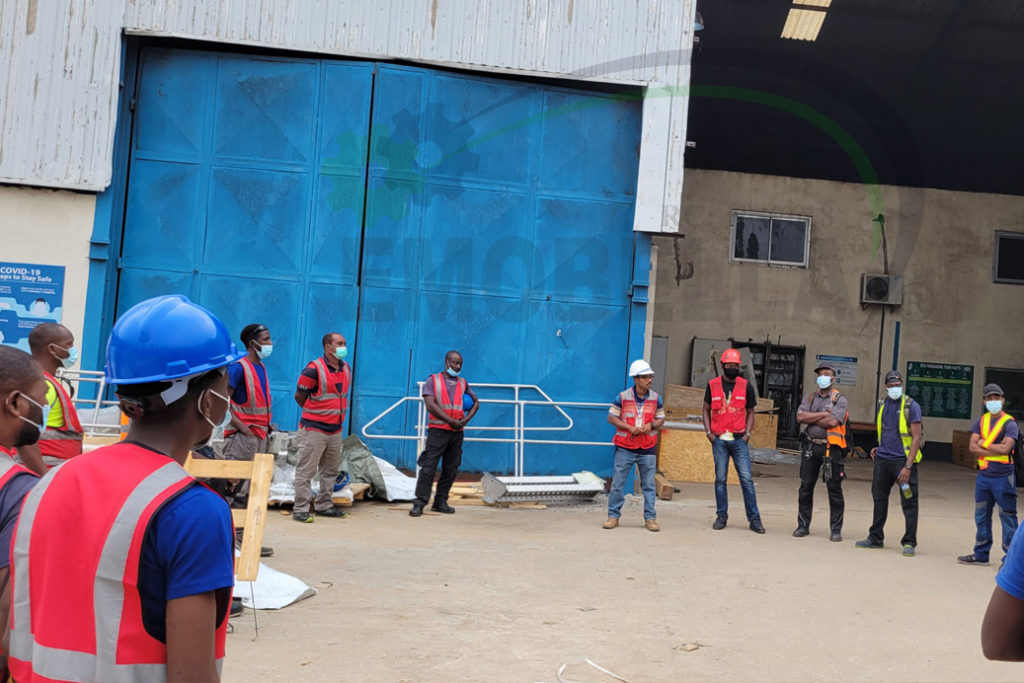Last Updated: November 2025

Just as the September Equinox brings perfect balance to day and night, Non-Destructive Testing achieves the perfect equilibrium between thorough inspection and preserving your valuable assets.
What Exactly is Non-Destructive Testing?
Imagine being able to see inside a sealed vessel, detect microscopic cracks in a pipeline, or verify the integrity of a welded joint, all without causing even the slightest damage to the equipment. That’s the remarkable power of Non-Destructive Testing (NDT).
NDT refers to a collection of analysis techniques used to evaluate materials, components, and structures without permanently altering or damaging them. Think of it as giving your industrial equipment a comprehensive health check-up, much like an X-ray or MRI for the human body, but for pipelines, pressure vessels, welds, and critical infrastructure.
At Emobella Engineering Nigeria Limited, we have seen firsthand how NDT has transformed industrial safety and maintenance across Lagos and Nigeria. Our expertise in pressure vessel inspection and non-destructive testing of vessels and pipelines has helped numerous clients prevent catastrophic failures and extend the lifespan of their equipment.
Ready to ensure your equipment’s safety? Contact our NDT experts today for a free consultation.
Why Should Your Business Care About NDT?
Here’s a question that might keep you up at night: How confident are you that your critical equipment is operating safely right now?
Without proper inspection, you’re essentially operating in the dark. NDT is a highly valuable technique that can save both money and time in product evaluation, troubleshooting, and research. But beyond the financial benefits, NDT is fundamentally about protecting lives, preventing environmental disasters, and maintaining operational continuity.
The Triple Win: Safety, Savings, and Sustainability
Traditional destructive testing methods require cutting, breaking, or otherwise permanently altering test samples. Not only is this wasteful and expensive, but it also means you are destroying perfectly good equipment to verify its quality. NDT flips this equation entirely.
With NDT, you get:
- Uncompromised Safety: Detect defects before they become failures
- Cost Efficiency: No need to replace destroyed test samples or shut down operations for extended periods
- Extended Asset Lifespan: Regular monitoring allows for predictive maintenance rather than reactive repairs
- Regulatory Compliance: Meet industry standards without disrupting your production schedule
Don’t wait for equipment failure. Schedule your NDT inspection now and protect your operations.
The Six Pillars of Modern NDT Methods
The six most frequently used NDT methods are eddy-current, magnetic-particle, liquid penetrant, radiographic, ultrasonic, and visual testing. Let’s break down each method so you understand which might be right for your specific needs.
- Visual Testing (VT):
The Foundation of All Inspections. Never underestimate the power of a trained eye. Visual testing is the most basic yet essential NDT method, often serving as the first line of defence in quality assurance. Using specialised tools like borescopes, magnifying glasses, and
sophisticated camera systems, inspectors can identify surface irregularities, corrosion, misalignment, and other visible defects. At Emobella Engineering, our inspectors combine decades of experience with cutting-edge visual inspection equipment to catch issues that automated systems might miss. - Ultrasonic Testing (UT): Sound Waves Revealing Hidden Truths Ultrasonic testing uses high-frequency sound waves to penetrate materials and detect internal flaws. When sound waves encounter a crack, void, or inclusion, they reflect to the transducer, creating a signature pattern that reveals the defect’s location and size.
This method excels at:
* Measuring material thickness accurately
* Detecting internal cracks and voids
* Evaluating weld quality
* Assessing corrosion from the inside out
Think of it as sonar for industrial equipment, the same principle that helps submarines navigate underwater helps us navigate the internal structure of your critical assets.
- Radiographic Testing (RT): X-Ray Vision for Industry Just as medical X-rays reveal broken bones, radiographic testing uses X-rays or gamma rays to create images of an object’s internal structure. This method is particularly valuable for detecting volumetric defects like porosity, inclusions, and cracks that might be invisible from the surface. While RT provides exceptional detail, it requires careful safety protocols due to
radiation exposure. That’s why Emobella Engineering maintains strict safety standards and ensures all our radiographic testing technicians are fully certified and continuously trained. - Magnetic Particle Testing (MT): Magnetism Exposes Surface Flaws. Magnetic particle testing works on a simple yet brilliant principle: apply a magnetic field to ferromagnetic materials, then sprinkle iron particles on the surface. If there’s a crack or discontinuity, it disrupts the magnetic field, causing particles to cluster around the defect like iron filings around a magnet. This method is incredibly effective for:
Detecting surface and near-surface cracks
Inspecting welds and heat-affected zones
Quality control in manufacturing
In-service inspection of components - Liquid Penetrant Testing (PT): Capillary Action Catches Cracks. Liquid penetrant testing is like a sophisticated version of using dye to find a leak in a tyre. A coloured or fluorescent liquid is applied to the surface of the material. The liquid seeps into any surface-breaking defects through capillary action. After removing excess penetrant and applying developer, defects become vividly visible. This versatile method works on virtually any non-porous material, metals, plastics, and ceramics, making it one of the most widely applicable NDT techniques available.
- Eddy Current Testing (ET): Electromagnetic Detection at Its Finest Eddy current testing uses electromagnetic induction to detect surface and near-
surface flaws in conductive materials. When an alternating current passes through a coil near the test material, it induces circulating currents (eddy
currents) in the material. Defects disrupt these currents, changing the coil’s electrical impedance in measurable ways. This method shines for:
High-speed automated inspection
Detecting stress corrosion cracking
Measuring coating thickness
Identifying material properties and heat treatment variations
Don’t wait for equipment failure. Schedule your NDT inspection now and protect your operations.




